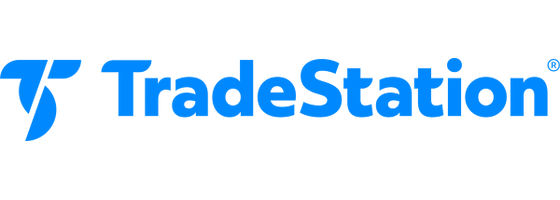Our evaluations and opinions are not influenced by our advertising relationships, but we may earn a commission from our partners’ links. This content is created independently from TIME’s editorial staff. Learn more about it.
Retirement planning means figuring out how much money you'll need to retire comfortably and developing a strategy to make it happen. It's easy to put off planning, either because you think there's no rush or you don't know where to start. However, the longer you wait, the harder it is to reach your goals and maintain your quality of life once the paychecks stop coming in.
People often say it's never too late to start saving for retirement. While that's true, it's also never too early to begin saving. The sooner you start, the longer your money can benefit from the power of compounding—and the more flexibility you'll have later in life. Your future self will thank you.
Looking for financial advice regarding your retirement accounts? Consult with Empower's team of experts
Empower Financial Advisor
Empower Financial Advisor
5 Steps for retirement planning
1. Decide when to start saving
A report from the Milken Institute concluded that young adults need to begin regularly saving for retirement by age 25 to have a nest egg of at least $1 million.
Consider a few scenarios. Say you save $400 a month starting at age 25. At age 65, you'll have contributed a total of $192,000, and your savings will be worth more than $1.1 million, assuming a 7% annual rate of return.
Now assume you wait until age 35 to save the same amount (with the same return). At age 65, you'll have contributed $144,000 and saved $490,000—less than half the amount as starting 10 years earlier. Wait 10 more years to start (age 45), and you'll have contributed $96,000 and saved $209,000.
At the other end of the spectrum: Say you start saving at age 15 (kids can contribute to an IRA as long as they have earned income). By age 65, your contributions will total $240,000, and your nest egg will be worth $2.2 million. This chart shows the different scenarios:
| Age you start saving | Monthly contribution | Years of growth | Total contributions | Balance at age 65 |
|---|---|---|---|---|
15 | $400 | 50 | $240,000 | $2.2 million |
25 | $400 | 40 | $192,000 | $1.1 million |
35 | $400 | 30 | $144,000 | $490,000 |
45 | $400 | 20 | $96,000 | $209,000 |
The power of compounding can't be overemphasized. While it's never too late to start saving for retirement, the sooner you start, the more time your money will have to grow. As a bonus, the sooner you start, the easier it is to make saving a lifelong habit.
Various bank savings products and accounts will allow you to grow your interest rapidly and can help you in achieving your retirement savings goals.
2. Consider how much money you'll need to retire
There's no one-size-fits-all plan for determining how much money you'll need in retirement. After all, your retirement goals will depend on factors like your life expectancy, spending and saving habits, and lifestyle preferences. Still, two popular guidelines can help point you in the right direction:
- Save 10% to 15% of your pre-tax income each year. You might start by saving 6% per year as a young adult, ramping up 1% per year until you reach that 15% guideline. Higher earners should generally aim beyond 15%.
- The 80% rule. This rule says you'll need 80% of your pre-retirement income to maintain your current lifestyle when you stop working. Depending on your retirement goals, you might need more or less than 80%.
Online retirement income calculators can be an easy way to determine your savings needs based on inputs you provide, such as your current age, retirement age, annual income, current retirement savings, and the years of retirement income you anticipate needing.
3. Consider retirement plan options
Once you know how much to save, you'll have to decide where to keep your money. Retirement plans are broadly grouped into four categories: employer-sponsored retirement plans, individual retirement accounts(IRAs), self-employed retirement plans, and pension plans.
Employer-sponsored retirement plans
Many employers offer retirement plans to help employees save for the future, and some include employer-matched contributions. The type of plan depends on where you work. Private, for-profit companies generally offer 401(k) plans, while non-profits, public education institutions, and ministries offer 403(b) plans. Federal government employees and uniformed services personnel have access to the Thrift Savings Plan (TSP), while 457 plans are available to state and local government (and certain non-profit) employees.
Individual retirement accounts (IRAs)
IRAs are available in traditional and Roth versions. The biggest difference is when you get a tax break. With traditional IRAs, you may be able to deduct your contributions the year you make them, but you'll pay taxes when you withdraw money during retirement. Roth IRAs don't offer an upfront tax break, but your earnings grow tax-free, and qualified withdrawals in retirement are also tax-free. Online brokerage platforms, such as Robinhood IRA, let you invest money in general investment and retirement accounts, including traditional and Roth IRAs.
 |  |  | |
|---|---|---|---|
| Roth IRA Account | Empower | Robinhood Traditional & Roth IRA | M1 Investing App |
| Best for | Help choosing and managing investors | No commission or management fees | Low costs and flexibility |
| Min. balance to open | $0 | $20 | $4 monthly fee or 0.25% annual fee. |
| Fees | 0.89% or less | $0 commission or management fees. Early withdrawal fees may apply. | $4 monthly fee or 0.25% annual fee. |
Self-employed retirement plans
If you're self-employed, you have a few options for stashing money for retirement, including a SIMPLE IRA, SEP IRA, and Solo 401(k) plan. SIMPLE IRAs (short for Savings Incentive Match Plan for Employees) are available to companies with 100 or fewer employees, while companies of any size can set up a SEP. A Solo 401(k) covers a business owner with no employees (or the owner and their spouse).
Pension plans
A pension plan is a defined benefit that provides a specified monthly benefit at retirement. Most employers have shifted from traditional pensions to 401(k) plans, so a pension might not be an option. The workers most likely to have one are unionized workers in both the public and private sectors, as well as active-duty military members with at least 20 years of service.
If you have a 401(k) or other retirement plan at work, consider starting there to take advantage of any matching contributions from your employer. Whenever possible, max out your annual contributions to your retirement plans, including 401(k)s and IRAs, to supercharge your retirement savings.
4. Choose investments
Stocks, bonds, and funds form the foundation of many investment portfolios, but you can invest in myriad asset classes, such as:
- Artwork, including shares of fine art from platforms like Masterworks.
- Commodities.
- Cryptocurrencies.
- Options.
- Precious metals.
- Real estate, such as real estate investment trusts (REITs) and crowdfunding platforms like RealtyMogul.
- Stamps, comic books, and other collectibles.
LEARN MORE: Best Long-Term Investments
Your ideal investment mix depends on your goals, risk tolerance, and time horizon. A common approach is to subtract your age from 110 or 120 to figure out how much of your portfolio should be in stocks versus bonds (the starting point used to be 100, but the formula has changed to reflect longer lifespans and rising healthcare costs). So, for example, at age 30, your portfolio might be 80% to 90% stocks and 20% to 30% bonds.
The general idea is to invest in higher risk/higher return investments when you're younger and better able to weather market fluctuations. As you get closer to retirement, you'll gradually shift to a more conservative investment mix.
5. Keep saving and rebalance your retirement portfolio as needed
It's a good idea to check on your retirement plan at least once a year to ensure you're on track. You may need to rebalance your portfolio to maintain its original allocation. For example, if your portfolio should be 60% stocks and it bumps up to 65%, you can sell some stock or invest in other assets to bring the allocation back to your intended range. Rebalancing happens automatically if you have a online broker or a target-date fund, which gradually shifts to more conservative investments the closer you get to your targeted retirement age.
 |  |  | |
|---|---|---|---|
| Brokerage account | Public App | TradeStation | J.P. Morgan Self Directed Investing |
| Fees | $0 stock & ETF trades. 1.25% crypto fee. | $0 stock & ETF trades. $0.60/contract options trades. $1.50/contract futures trades. $14.95 mutual fund trades. | $0 stock & ETF trades. $0.65/contract options trades. $0 mutual funds trades. |
| Min. balance to open | $1* | $0 | $0 |
| View Offer | View Offer | View Offer |
Why is retirement planning important?
Retirement planning helps you figure out how much money you'll need in retirement—and how you'll make it happen. A good retirement plan helps ensure you'll be financially comfortable and maintain the same quality of life during your later years. The sooner you get started, the faster you'll be able to reach your goals.
Without retirement planning, you risk living on less income later in life (potentially just your Social Security benefits) or working longer than you would like. Even if you plan never to retire, it's time to reconsider: That plan can easily be derailed if you're unable to work because you have health problems, need to leave work to care for a loved one, or lose your job for some reason. Retirement planning—and working toward your savings goals—gives you the best path to retirement success.
How much do you need to save for retirement?
Your retirement savings target depends on your life expectancy, spending and saving habits, goals, and lifestyle preferences. One widely followed rule suggests saving 10% to 15% of your annual income for retirement. Another says you'll need 80% of your pre-retirement income to retain the standard of living you had before retirement.
Of course, if you plan to live cheaply—perhaps retiring overseas where the cost of living is lower—you might get by on less. On the other hand, if you have a large (and expensive) bucket list, you'll likely need more.
When can you retire?
When you can retire depends on when you'll have enough money to live the lifestyle you want in retirement. If you’re entitled to Social Security benefits in retirement as a worker or spouse (or both), consider your strategy. You can start collecting Social Security benefits as early as age 62, but you'll boost your benefits (and your spouse's) if you wait until age 67—the "full retirement age" for those born in 1960 or after. Your monthly payment will be even higher if you wait until age 70 to claim benefits. Spouses should compare what they’ve earned on their own with what they may be entitled to as a spouse or widow(er)—and those married 10 years or longer should investigate spousal benefits based on their former marriage.
TIME Stamp: A financial advisor can help you reach your retirement goals
Retirement planning goes beyond choosing investments. You also have to consider taxes, insurance, the timing of your Social Security benefits, required minimum distributions (RMDs), and estate planning.
A financial advisor like J.P. Morgan or Empower can well be worth the money if you lack the time, interest, or expertise to handle retirement planning on your own. In addition to picking appropriate investments based on your goals, risk tolerance, and time horizon, a financial advisor can help you prioritize your options and get where you want to be during retirement.
Frequently asked questions (FAQs)
What is the $1,000-a-month rule for retirement?
The $1,000-a-month retirement rule says that you should save $240,000 for every $1,000 of monthly income you'll need in retirement. So, if you anticipate a $4,000 monthly budget when you retire, you should save $960,000 ($240,000 * 4).
What is the 70% rule for retirement?
The 70% rule for retirement savings suggests that your estimated retirement spending should be about 70% of your pre-retirement, after-tax income. For example, if you take home $100,000 a year, your annual spending in retirement would be about $70,000, or just over $5,800 a month. Higher earners typically aim for a higher percentage, such as 80% or even 90% of their pre-retirement income, depending on their goals and retirement lifestyle.
What is the 3% rule in retirement?
The 3% rule in retirement says you can withdraw 3% of your retirement savings a year and avoid running out of money. Historically, retirement planners recommended withdrawing 4% per year (the 4% rule). However, 3% is now considered a better target due to inflation, lower portfolio yields, and longer lifespans.
What is a good monthly retirement income?
A good monthly retirement income is about 70% to 90% of your pre-retirement income. Overall, the median income for households headed by someone age 65 or older was $50,290 a year in 2022, or $4,190 per month, according to the U.S. Census Bureau. The U.S. Bureau of Labor Statistics has slightly higher findings: In 2021, people aged 65 and up spent an average of $57,818 annually, or $4,818 monthly.
INVESTMENT AND INSURANCE PRODUCTS ARE: NOT A DEPOSIT • NOT FDIC INSURED • NO BANK GUARANTEE • MAY LOSE VALUE
The information presented here is created independently from the TIME editorial staff. To learn more, see our About page.

